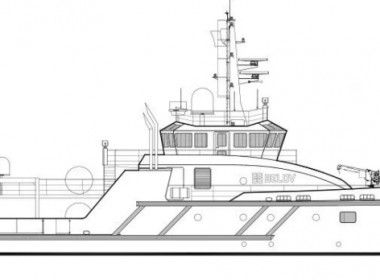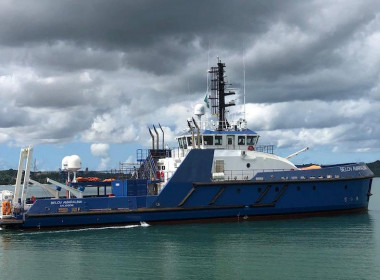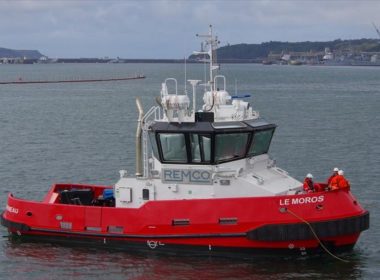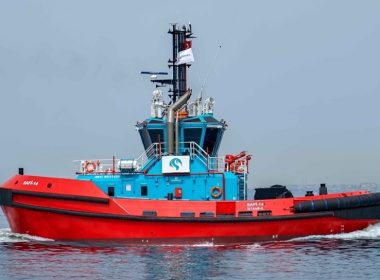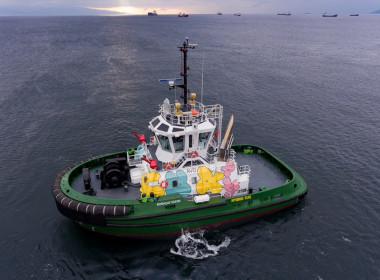AWARDS 2023 | Best Medium Pusher Tug – HB Poraque – Robert Allan Ltd & Belov Engenharia

Best Medium Pusher Tug – HB Poraque – Robert Allan Ltd & Belov Engenharia
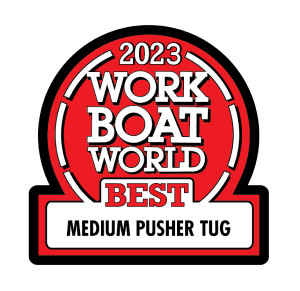
This very interesting and versatile medium-sized inland waters pusher tug has been built as the first of a pair by a Brazilian shipyard, Belov Engenharia.
The hybrid-electric-powered vessel, with a shallow draught and an impressive top speed of 15 knots, is a very versatile workboat for riverine and harbour operations in the Amazon River system. She is truly multi-purpose.
“It is the first fully electric pusher tug in Brazil, and one of the first in the world,” Pedro Ventura, Director of Business Development for Latin America at Robert Allan Ltd, told Baird Maritime. “It has a battery-powered propulsion system that has the potential to eliminate fuel consumption, significantly reducing emissions, noise, and maintenance costs. This makes it a pioneer in green and efficient river transportation, and a model for future projects in this sector.”
Ventura said that one of the main challenges with the design was related to adapting the electrical system to the specific operational requirements of the vessel. The battery capacity needed to be optimised to allow for full battery operation without compromising other aspects of the design (such as main dimensions or manoeuvrability).
“Another factor we had to take into account was the safety requirements for setting up and using the batteries on board, especially since this is the first application of marine batteries manufactured by WEG.”
“The tug is unique due to her hybrid propulsion system, which allows reductions in both oil consumption and gas emissions,” said Marcos de Parahyba Campos, Project Manager at Belov Engenharia. “This adds value for the owner and helps preserve the sensitive environment of the Amazon, where she will operate.”
Parahyba Campos added that initial figures indicate a 35 to 40 per cent reduction in diesel consumption when the tug is operating in hybrid mode. With the aid of onshore infrastructure for recharging batteries, the reduction could easily reach 80 per cent.
“The size and weight of the batteries demanded extensive engineering to enable these to be fitted in the hull while also allowing easy access to all banks for future maintenance. Also, the fact that the battery room should be explosive-free and heavily refrigerated presented us with the challenge of finding suppliers that could fulfil all technical requirements.”
Parahyba Campos said the shipyard was in charge of integrating all technologies as well as developing the PMS, BMS, and EMS together with supplier WEG. This was because creating a user-friendly operational interface was of top priority so as to minimise the need for a highly specialised crew to operate the tug.
“Electrification/hybridisation is the most significant trend in the small to medium size vessel market,” he added. “Regulations from classification societies must evolve or adapt to keep up with the quick advances in this area. Environmental regulators should also be prepared for when disposal and/or recycling of batteries becomes more common in the future.”
Belov Engenharia enjoyed a highly productive year in 2023.
“We delivered two hybrid pushers and also undertook a PSV conversion project,” Parahyba Campos told Baird Maritime. “We converted it into an OTSV by adding more than 250 tonnes of steel. We also focused on an extensive retrofit of one of our DSVs to fulfil the new operational requirements of Petrobras as well as several docking work for our clients.”
He added that Belov Engenharia is confident that there will be continued demand for newbuild vessels for Brazil’s inland waterways, since the country’s agriculture and mining sectors are growing steadily and marine infrastructure in general is improving each year. The demand for inland pusher tugs and barges is greater compared to earlier years, and it will grow further in the next ten years. The country’s shipbuilding industry must therefore become more efficient and be willing to incorporate new technologies to become more competitive internationally.
“We can foresee the increase in the bollard pull reaching values of over 70 tonnes and even up to 100 tonnes,” Parahyba Campos said when asked about the state of the tug industry. “This is in order to accommodate the increase in the number and the size of ships that we expect will call at Brazilian Ports. Alternative propulsion options like electric/hybrid propulsion and ethanol fuel will also see growing demand over the next few years.”
For a list of the 2023 “Best Of” award winners, please click here.





